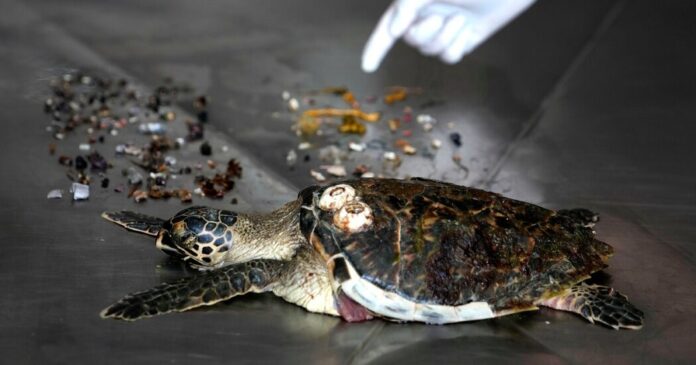A new scientific analysis quantifies the shockingly small amounts of plastic ingestion that can prove fatal to marine animals. Published in the Proceedings of the National Academy of Sciences, the study synthesizes data from over 10,000 autopsies of seabirds, sea turtles, and marine mammals to determine lethal plastic doses. The findings highlight the immediate and deadly threat posed by plastic pollution to ocean ecosystems.
Quantifying the Threat
Researchers calculated the amount of plastic required to kill 90% of animals exposed. The results were startling: roughly two baseballs worth of plastic can kill a sea turtle, three sugar cubes are enough to fatally harm a puffin, and a single soccer ball’s worth of plastic can kill a harbor porpoise. These quantities underscore how even relatively small amounts of ingested plastic can have catastrophic consequences.
Data-Driven Analysis
The study drew upon 53 independent research projects conducted worldwide, covering 57 species of seabirds, 31 species of marine mammals, and seven species of sea turtles. Nearly half of the species included in the analysis are already classified as threatened, vulnerable, endangered, or critically endangered, suggesting that plastic ingestion is exacerbating existing conservation challenges.
Beyond Entanglement: The Ingestion Crisis
The study focuses specifically on ingestion, meaning animals swallowing plastic debris. This is a critical aspect of the plastic pollution problem often overshadowed by the more visible issue of entanglement in fishing gear and other plastic waste. While entanglement is a major threat, the new research demonstrates that even seemingly small amounts of ingested plastic can be fatal.
The Bigger Picture
The study does not include data on microplastics – tiny plastic fragments invisible to the naked eye – which are increasingly prevalent in marine environments. The absence of microplastic data is significant because these smaller particles are easily ingested by a wider range of marine species, including filter feeders and plankton-eating animals. The findings suggest that the true impact of plastic pollution on marine life may be even greater than currently understood.
Implications for Conservation
The research reinforces the urgent need to reduce plastic waste entering the oceans. The data provides a clear and quantifiable measure of the harm caused by plastic ingestion, which can inform conservation efforts and policy decisions. Reducing plastic production, improving waste management, and preventing plastic leakage into marine ecosystems are essential steps to protect vulnerable species.
The study’s findings are a stark reminder of the immediate and deadly threat plastic pollution poses to marine life. By quantifying the lethal doses, the research provides a critical piece of evidence for addressing this global environmental crisis





























